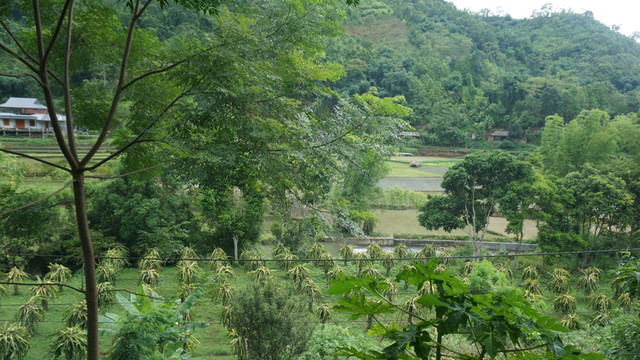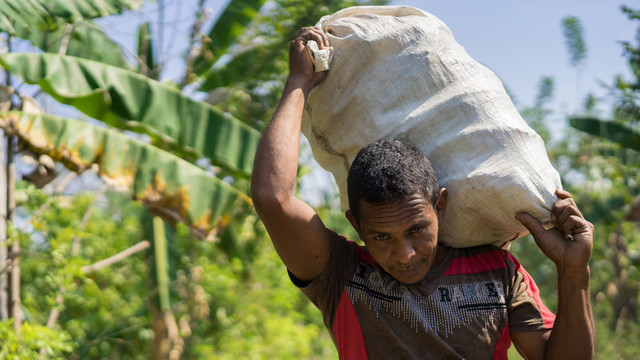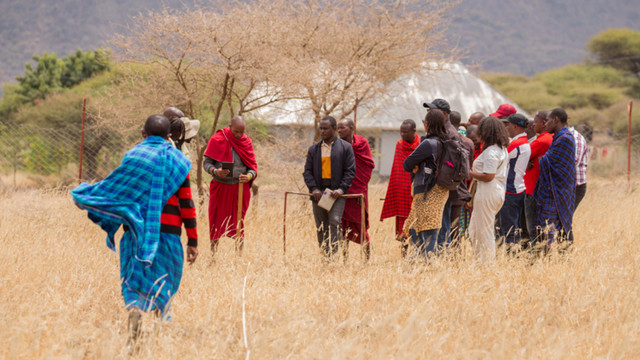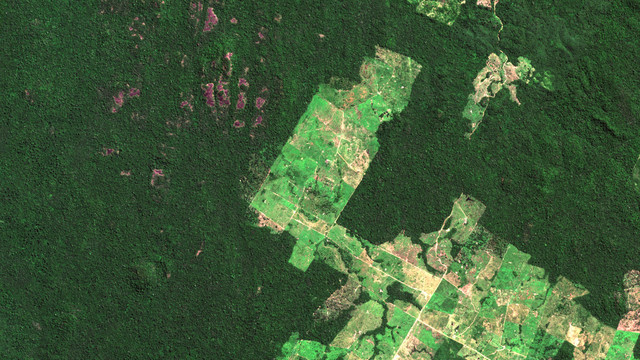Shaping the future of forest and farm landscapes in Africa
As part of a new interdisciplinary partnership, IIED will be working with sector experts, scientists and practitioners to better understand and manage the growing competition for land in sub-Saharan Africa, as governments seek to balance food production with forest conservation targets.



Cutting down trees, especially for livestock grazing, can lead to soil erosion, as seen on this hillside outside Addis Ababa (Photo: Aaron Minnick/World Resources Institute, Creative Commons via Flickr)
Africa's forests are disappearing faster than anywhere else in the world, losing almost three million hectares a year between 2010 and 2015 – an annual loss nearly the size of Belgium. Most of this loss was caused by agriculture expansion.
Increasing competition for land: food vs. forests
This forest loss is likely to continue, largely out of the need to produce food for the continent's growing population. The population of sub-Saharan Africa is set to more than double to 2.1 billion by 2050 – far outstripping growth in any other region. To meet this increase, food supply to sub-Saharan Africa must also more than double.
IIED research has shown the necessary boost in supply cannot be achieved solely through imports, by reducing food waste − or yield increases.
When forest governance is weak and market demand is high, yield increase could even drive further forest loss on farm-forest frontiers, as increased profits incentivise and enable further expansion.
Forests provide vital ecosystem services that underpin sustainable food supply – from providing habitats for species that support natural pest control to reducing nutrient run-off and protecting vital water supplies. In the long term, forest loss could negatively impact agriculture production.
African governments need to be more strategic in the way they manage the competition for land if they are to find a healthy balance between food production and maintaining forest ecosystem services. This means recognising that there is no easy 'win-win' situation − some forests will inevitably be lost while not all fertile land should be automatically earmarked for agriculture.
The myth of vacant and underused land
A closer look into land use policies in Ethiopia, Ghana and Tanzania reveals that competition for land is intense, and that this has been heavily underestimated. This is partly due to the prevailing perception among decision-makers involved in government land use planning that there are large tracts of vacant or underused land.
Some of this land is already being used by smallholder farmers or by pastoralists under customary tenure arrangements. Other areas are only marginally suitable for agricultural production due to factors such as soil infertility, and/or a high risk of soil erosion and drought. Moreover, large areas of land, deemed suitable for food production, overlap with forests.
Food and forest policies: on course for collision
Agricultural policies in Ethiopia, Ghana and Tanzania encourage further agricultural expansion along with intensification. The governments of all three countries aim to ensure domestic food security, supply international markets to boost economic growth, and create employment for the ever-growing young population.
Meanwhile, these countries aim to reduce and reverse deforestation and have set ambitious goals for increasing forest cover.
Not only are these policies at odds with each other, they also severely underestimate the increasing competition for land. Commitments to expand forest cover could constrain certain agricultural development options as resource competition intensifies. On the other hand, meeting food production targets for both domestic demand and international markets will inevitably cause further deforestation.
Intensification is no silver bullet
To reduce competition between the agricultural and forest sectors, policies in all three countries rely heavily on increased crop production, such as intensification.
Governments favour expanding large-scale commercial agriculture over small-scale practices, and much greater use of external inputs. But experience suggests conditions in Africa are less favourable for a green revolution, like the type seen in Asia − where yield drastically increased over a short period of time.
Large-scale and intensified agriculture also presents various social and environmental risks such as displacing smallholder farmers or threatening biodiversity.
IIED and partners have been exploring the barriers to more coherent policies and identifying ways to overcome them, to enable strategic management of land use competition between food and forests and more sustainable and equitable agricultural development.
Beyond technology
Technical challenges exist. Remote sensing technology, for example, is not currently sophisticated enough to identify the different agricultural drivers of deforestation (as also detailed in this blog). But improved technology alone would not be enough to manage the existing and future competition for land.
IIED's research has highlighted that a better understanding of the political and economic forces at play is a crucial first step towards shaping a more sustainable future of the forest and farm landscape in sub-Saharan Africa.
These forces are complex, spanning institutional governance issues (such as competing sectoral targets or budgetary constraints), incentives and disincentives of key stakeholders, historical legacies (for example, where the reorganisation of ministries has prevented forest and agricultural government agencies working collaboratively), and social trends.
An interdisciplinary approach
To navigate such complexities and identify pathways towards better land use policies, IIED is leading an interdisciplinary partnership with experts, scientists and practitioners in agriculture, forestry and conservation sectors through the Science for Nature and People Partnership (SNAPP).
Through a working group format, partners under SNAPP will work across different sectors to understand and overcome political, economic, institutional, social and technical barriers. This will include exploring how spatial analysis can better enable governments to understand and manage the competition for land.
Improving capacities on the ground
Building on the work of SNAPP, IIED is leading the SENTINEL (Social and Environmental Trade-offs in African Agriculture) research initiative. This aims to enhance capacities of both UK and African research organisations to conduct interdisciplinary research and engage with research users.
The goal is to provide decision makers in Africa's public and private sectors with better information of the social and environmental impacts of different agricultural development pathways. This initiative focuses on Ethiopia, Ghana and Zambia, while working with a wider group of universities in Africa to share lessons and build capacity.
All this will help inform national discourses on better ways to manage the existing competition between food and forests − crucial for Africa's long-term sustainability.
Xiaoting Hou Jones (xiaoting.hou.jones@iied.org) is a researcher and Phil Franks (phil.franks@iied.org) is a senior researcher in IIED's Natural Resources research group.




